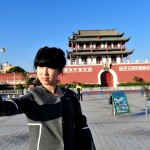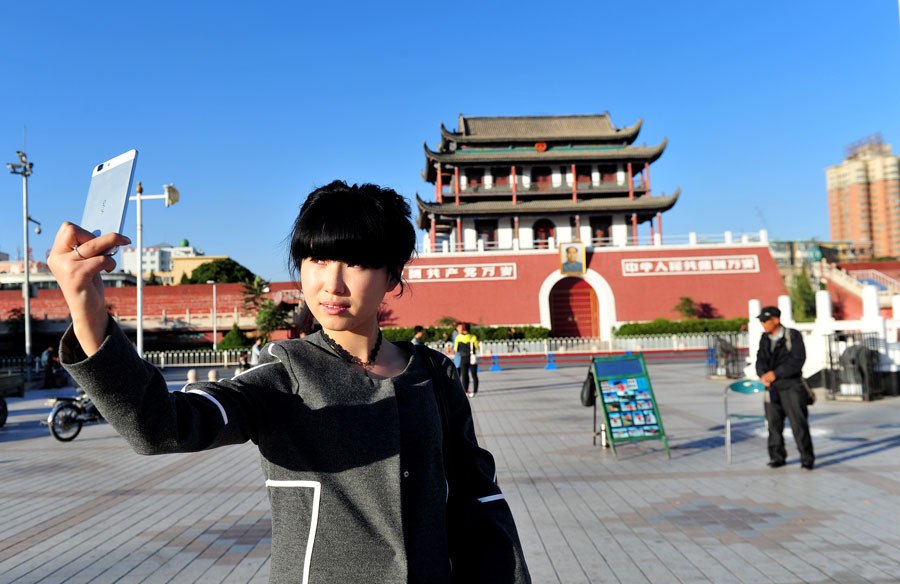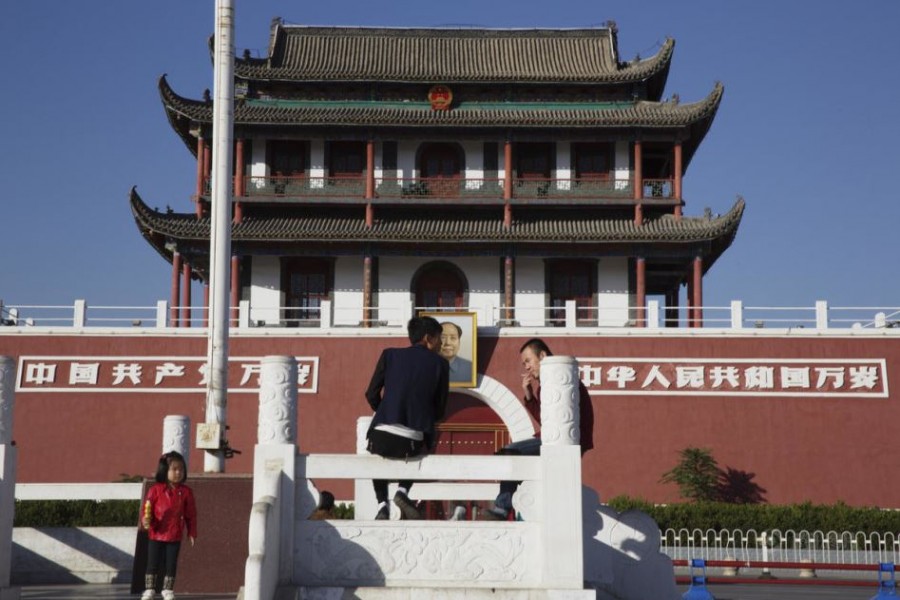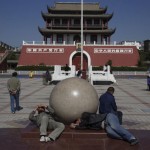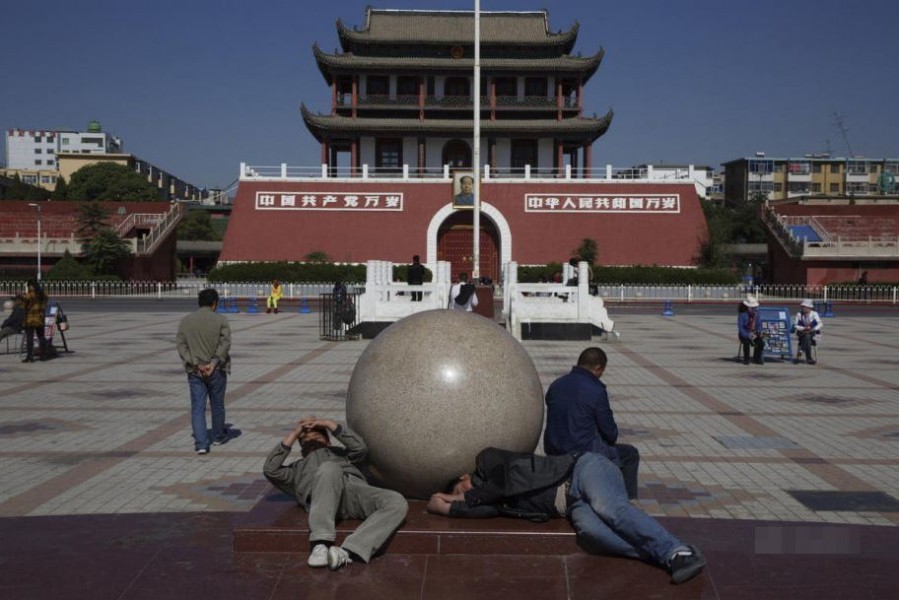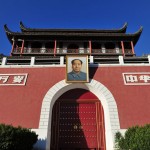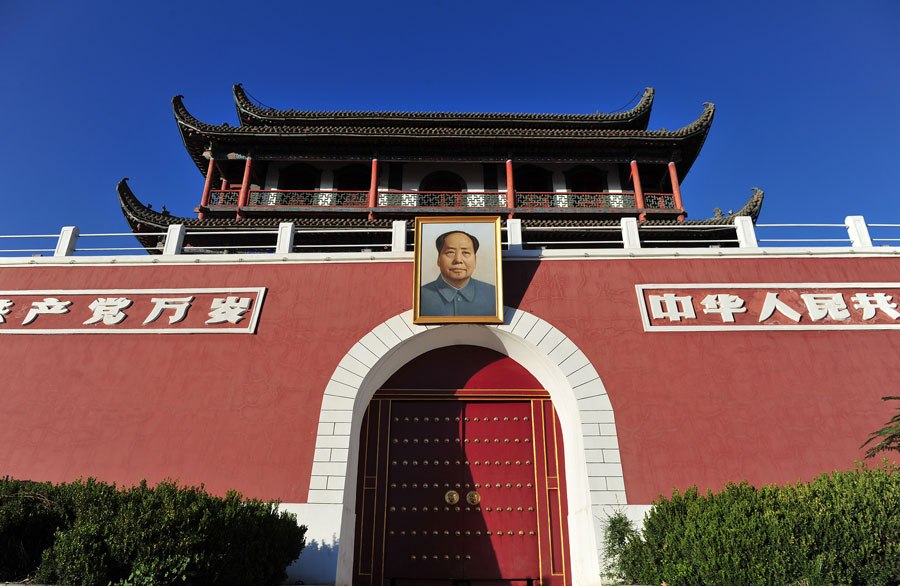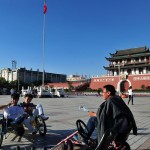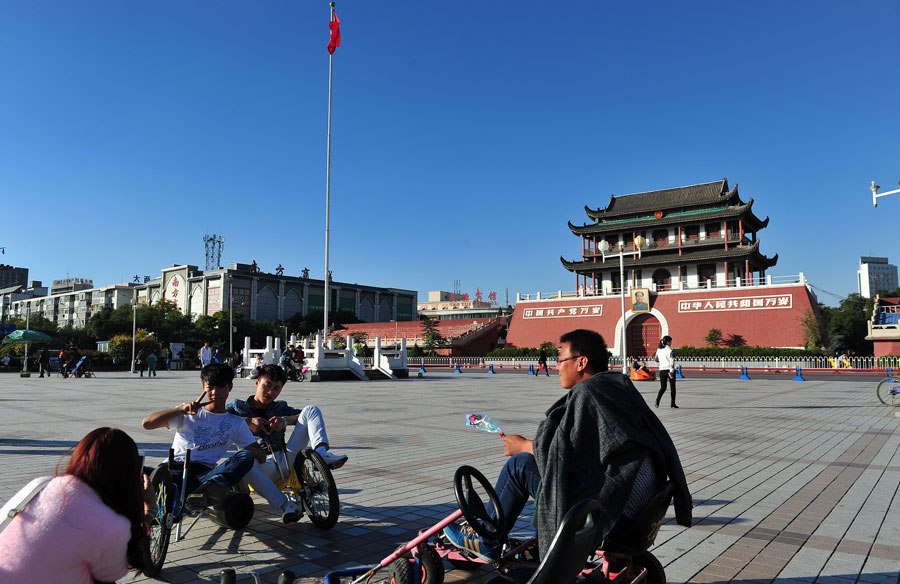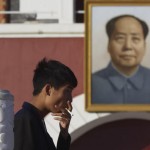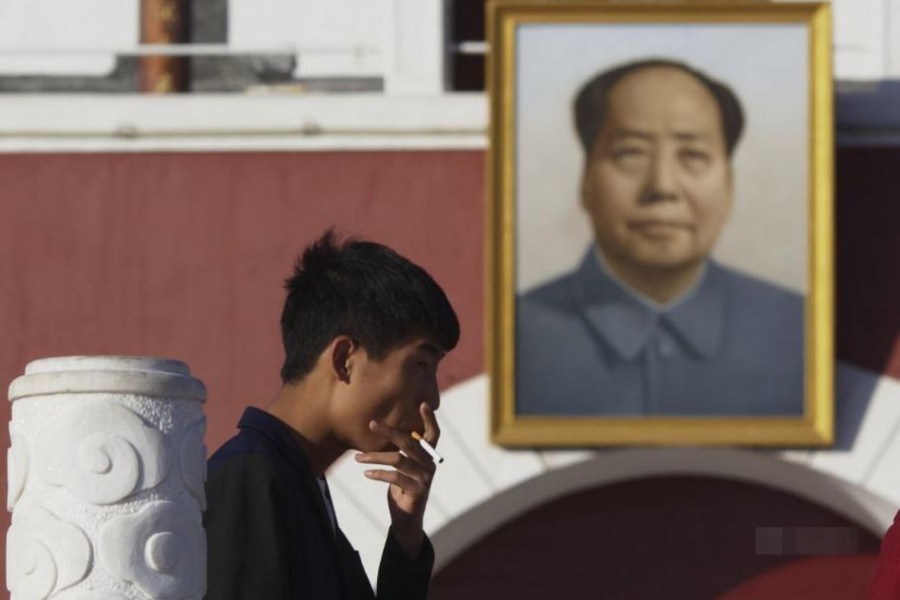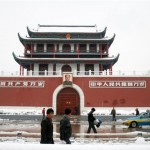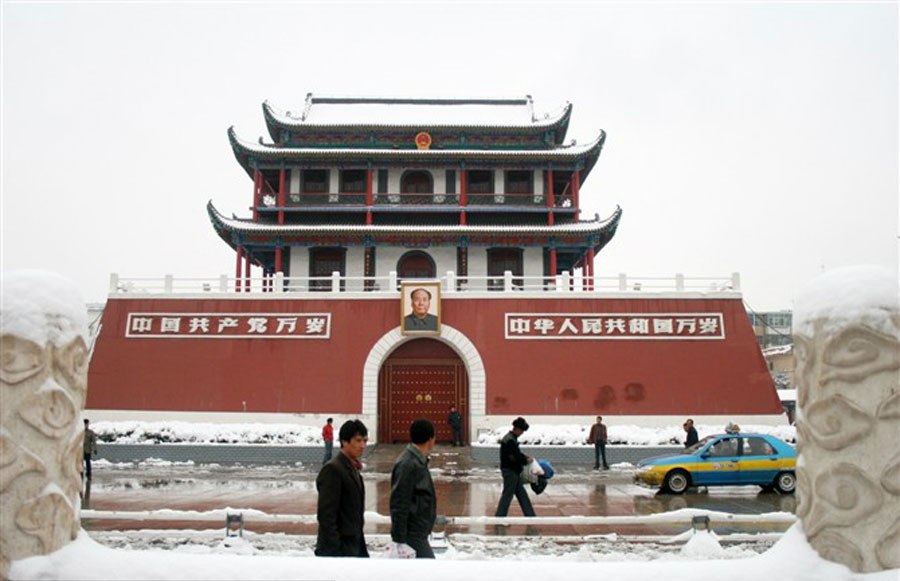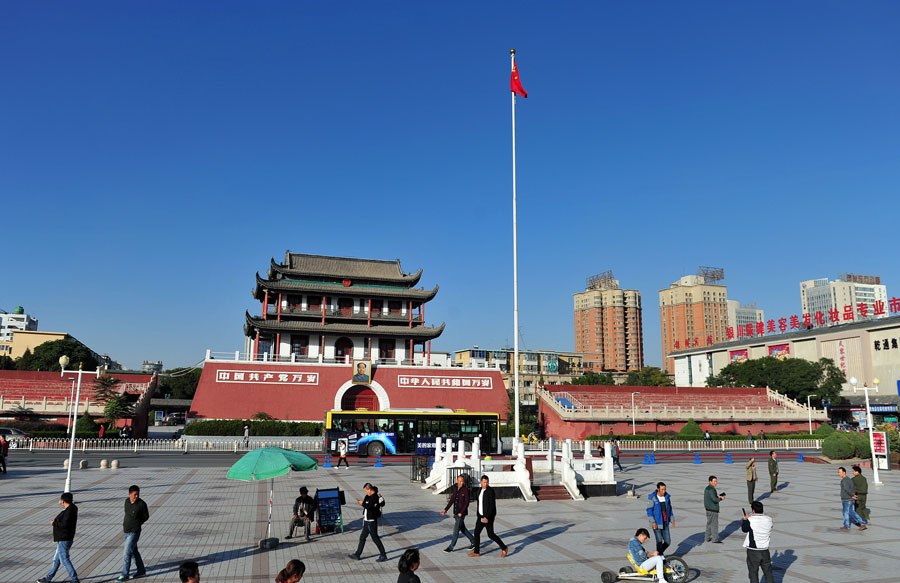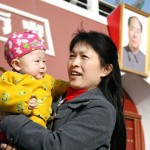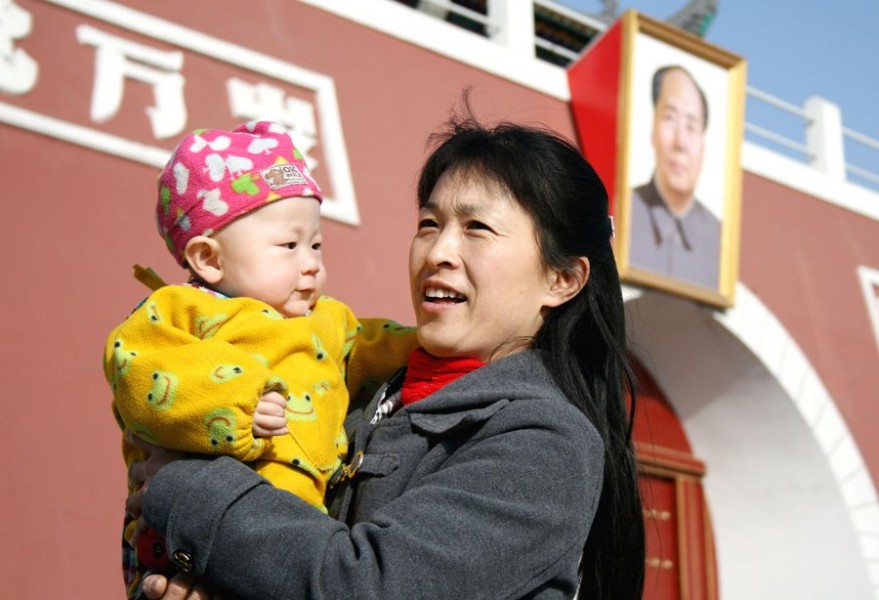Portrait of Mao Zedong hanging right above the doorway? Check. Emblem of the Chinese Communist Party hanging in the center of the building behind? Check. Flagpole hoisting the flag of the People’s Republic of China, surrounded by a pedestal of white marble? Check again.
Sure, these are all characteristics of the world-famous Tian’anmen Square in Beijing, which recently hosted a military parade to celebrate 70 years of peace since the end of World War II and viewed by almost all Chinese. But, it isn’t. Instead, it’s a smaller replica that locals call “little Tian’anmen Square”.
Well off the beaten path in Yinchuan, Ningxia about 1,300 kilometers west of Beijing, Nanxunmen has again popped up in the Chinese media for its uncanny resemblance to the famous Beijing landmark. But this isn’t another knock-off that has sprung up overnight in order to attract tourists, much like the counterfeit Great Wall of China in Jiangsu Province or one of the two fake Egyptian Sphinxes that call China home.
Nanxunmen has been a local fixture in Yinchuan for over 30 years, having been first awarded city-level cultural relic protection way back in 1985. Originally built during the Western Xia Dynasty, Nanxunmen is the last of six gates that had belonged to an ancient wall that enclosed the city. Though it was renovated several times in the 1950s, it wasn’t until the 1980s when Nanxunmen began to imitate Tian’anmen Square much more closely by choosing to color the gate described as “Tian’anmen red”.
At that time, the Department of Cultural Management suggested that Nanxunmen be restored to its original appearance, but the city government of the time decided instead to continue to emulate Tian’anmen Square because it had already been established as a local landmark among residents of the city.
And instead of completely copying the original, “Tian’anmen small” is adorned with a similar but different inscription on its front which knows how to cater to the powers in Beijing. Instead of the Tian’anmen Square inscription which says “Long live the People’s Republic of China, long live the united peoples of the world,” the Yinchuan version says, “Long live the Communist Party; Long live the People’s Republic of China.”
For a comparison, here’s the fake Tian’anmen Square (above) with the real one in Beijing (below):
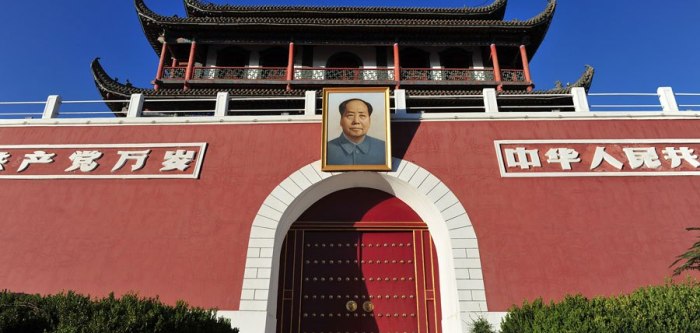
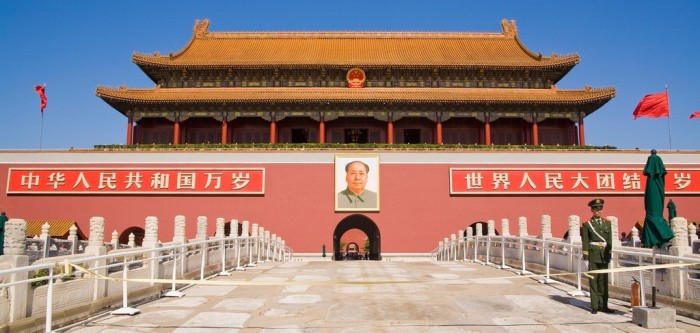
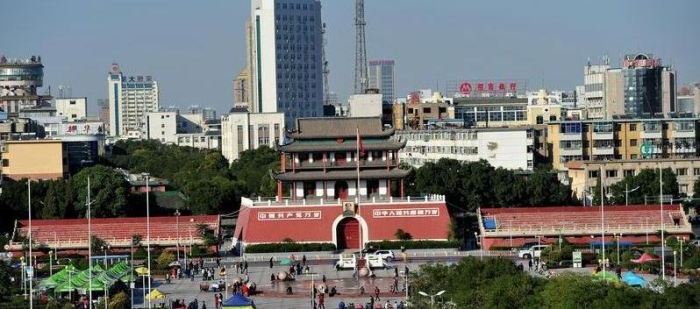
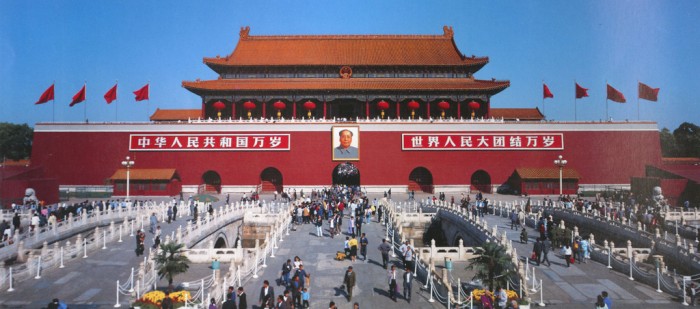
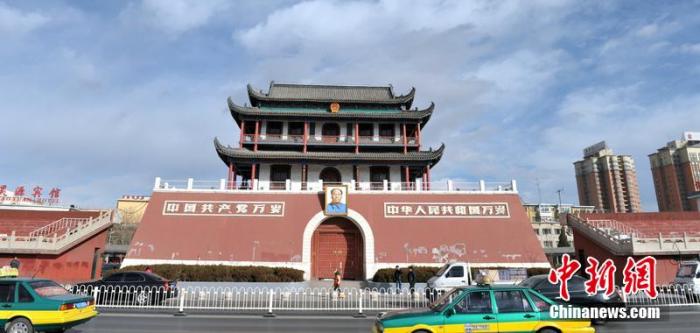
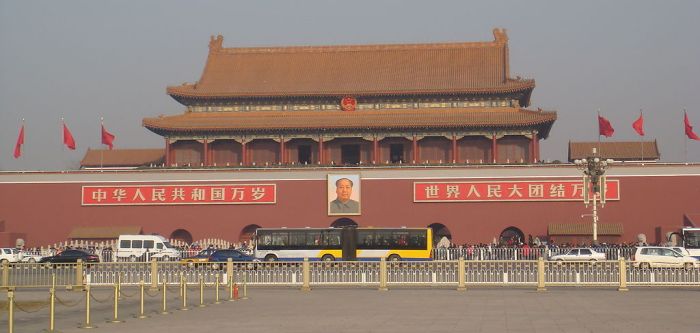
Some tourists may complain that Yinchuan’s version of Tian’anmen Square is smaller, less regal, and doesn’t have important neighbors like it does in Beijing. But as the photos show, visitors to Nanxunmen are seen to be much more relaxed, riding their bikes around the square, or even enjoying a nap at one of the most potent symbols of Chinese power.

